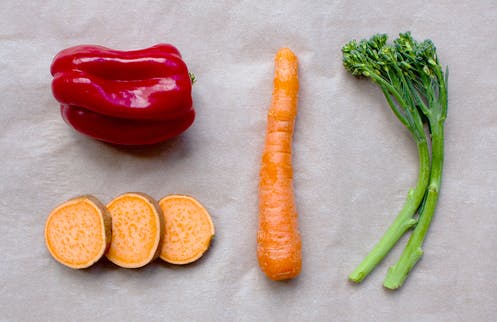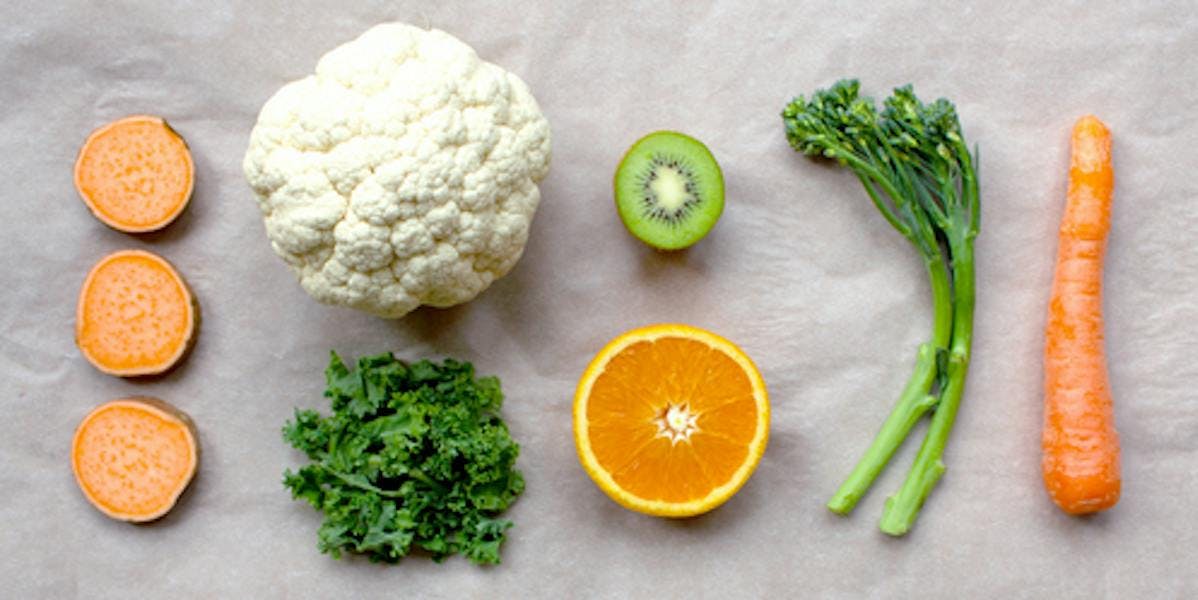Lifestyle
Five A Day Keeps The Doctor Away
by Emily Neill
min read
It’s no secret that eating plenty of fruit and vegetables is good for us, but we wanted to know why. Find out how eating more fruit and vegetables provides such a big boost to your health.
As the saying goes, 'an apple a day' is a healthy habit for sure. But it's really five a day that 'keeps the doctor away'. So don't stop at your one mid-afternoon apple snack a day! Keep reading to find out why.
Side note: as well as helping you hit that 5-a-day target, it turns out that apples can keep sleepiness away too! Packed with around thirteen grams of natural sugar, apples are a great way to wake yourself up (possibly even more effective than coffee).
Why do we need to eat fruit and vegetables?
There are three nutritional aspects of fruit and vegetables that make them good for us; vitamins, minerals and fibre. Here’s a rundown of some of the healthy elements fresh fruit and vegetables contain:
- Vitamin C - important for maintaining healthy body tissues
- Vitamin A - helps with the maintenance of normal vision, skin and our immune system
- Vitamin B (Folate) - important for healthy blood formation
- Fibre - promotes a healthy gut and associated with a reduced risk of bowel cancer
- Potassium - helps to maintain a healthy blood pressure and aids the functioning of the nervous system
TIP: Dried and tinned fruits also count towards your five a day, but some of these have added sugar, so it’s good to be aware of this when thinking about portions and quantities (see below).
Why five a day?
This is the number of food portions roughly equating to the recommended daily intake provided by expert nutritionists (400g a day or 14oz).
- An adult portion is 80g (about 3oz) with fresh fruit or vegetables
- The guide for a child’s portion is the amount they can fit in the palm of their hands
- With dried fruit, 30g (instead of 80g) makes up a portion
But don’t worry if you don’t always have weighing scales to hand, we’ve got you covered. Here are some examples to give you an idea of how much you need to eat to make up a portion.

What counts as a portion of fruit and vegetables?
- One apple, banana, pear, orange or similar sized fruit
- One dessert-sized bowl of salad
- Two small-sized fresh fruit such as plums and satsumas
- Two slices of larger fresh fruits like grapefruits, pineapple and mango
- Two broccoli spears
- Four heaped tablespoons of cooked kale
Which fruit and vegetables?
The key here is variety and the easiest way to quantify this is by the colours on your plate (green, yellow, red, purple, orange and white). Red fruits for example tend to be high in vitamin A and C as well as manganese and fibre. While dark green leafy vegetables contain vitamins C and K and the minerals iron and calcium. And purple fruit and vegetables contain manganese, vitamins K, B and C and potassium. So choosing a wide variety of fruits and vegetables from each of the colour groups doesn’t just add appeal by looking tasty, it’s also the best way to get the most nutritional benefit out of your five a day.
Help getting more fruit and veg
Trying allplants meals could be the perfect solution for getting more fruit and vegetables into your diet. And the best part? Made by vegan chefs and delivered frozen, each and every one of our plates are delicious and ready to enjoy within minutes.
We hope we’ve shed some light on the benefits of eating more fruit and vegetables and the optimum amounts of these to put on your plates as part of a healthy, balanced diet. If you have any questions, we’d love to hear from you! Get in touch with our team via social media using the @allplants handle.
By Emily Neill
Emily is our Content and Community Assistant by day, and qualified PT by… later that day. She couldn’t live without exercise (makes sense) so can usually be spotted in her favourite spin class, with our Three Mushroom Risotto for afters.
Let us take care of dinner
We help to make eating more plants easy and delicious. Fancy letting us take care of dinner? Check out our delicious meals here.
Shop now
